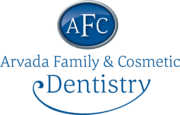What is a Dental Emergency? The following guidance document was published by the Colorado Dental Association on March 20, 2019. We will be following the advice of the CDA, ADA, and CDA throughout the COVID-19 pandemic.
This guidance may change as the COVID-19 pandemic progresses. Dentists should use their professional judgment in determining a patient’s need for urgent or emergency care.
On March 19, Gov. Polis issued an executive order to limit all treatment to emergency care to minimize the spread of COVID-19 and conserve PPE. An executive order has the force of law and is subject to criminal charges or legal action if not followed. In his order, he listed permitted surgeries or procedures. So, What is a Dental Emergency?
Surgeries or procedures are permitted when there is:
- A threat to the patient’s life
- A threat of permanent dysfunction to an extremity or organ system
- Risk of metastasis or progression of the staging of a disease or condition or
- A risk that the patient’s condition will rapidly deteriorate if the procedure or surgery is not performed.
The executive order recommends delaying any procedure that can be postponed for three months without undue risk to the patient’s current or future health but also leaves some room for interpretation in the dental profession. The ADA has created a list of what are considered dental emergencies as well as dental urgent care situations.
ADA Emergency Guidance:
Dental emergencies are potentially life-threatening and require immediate treatment to stop ongoing tissue bleeding, alleviate severe pain or infection, and include:
- Uncontrolled bleeding
- Cellulitis or a diffuse soft-tissue bacterial infection with intra-oral or extra-oral swelling that potentially compromises the patient’s airway
- Trauma involving facial bones, potentially compromising the patient’s airway
Urgent dental care focuses on the management of conditions that require immediate attention to relieve severe pain and/or risk of infection and to alleviate the burden on hospital emergency departments. These should be treated as minimally invasively as possible.
- Severe dental pain from pulpal inflammation
- Pericoronitis or third-molar pain
- Surgical post-operative osteitis, dry socket dressing changes
- Abscess, or localized bacterial infection resulting in localized pain and swelling
- Tooth fracture resulting in pain or causing soft tissue trauma
- Dental trauma with avulsion/luxation
- Dental treatment required prior to critical medical procedures
- Final crown/bridge cementation if the temporary restoration is lost, broken or causing gingival irritation
- Biopsy of abnormal tissue
Additional Best Practices:
- AVOID all procedures that could create an aerosol UNLESS you’re performing a life-saving procedure. If you are generating an aerosol, you must wear appropriate PPE, which includes an N95 mask, face shield, full gown, and gloves. Minimize aerosol effects by using a rubber dam and high-speed suction and consider oral rinsing with an antimicrobial prior to treatment.
- At this time, assume that every patient is COVID-19 positive and use appropriate PPE.
- If you need to treat a patient, always implement telephone or tele-dental triage before seeing the patient. Consider having the patient take a picture or video of the area of concern with their cell phone and send it to you.
- If a patient has tested positive for COVID-19, is symptomatic, and has a true dental emergency, consider prescribing antibiotics and OTC pain medication to delay treatment if possible and refer the patient to the nearest emergency department for care.
- Limit family members attending dental visits to minimize hand contact and unnecessary touching and minimize the number of staff members in the treatment areas to preserve needed PPE.
Be advised that the above are suggestions that may be beneficial, but may not be possible, nor apply to your personal circumstances.

